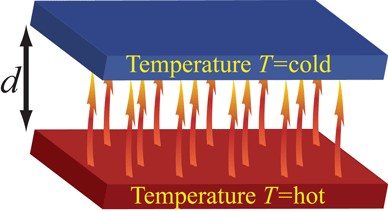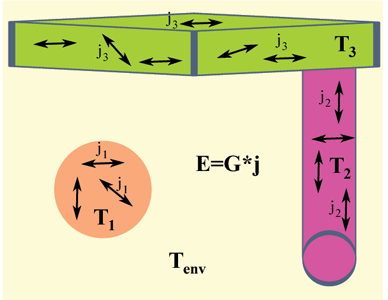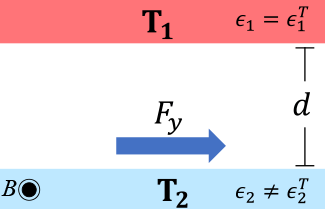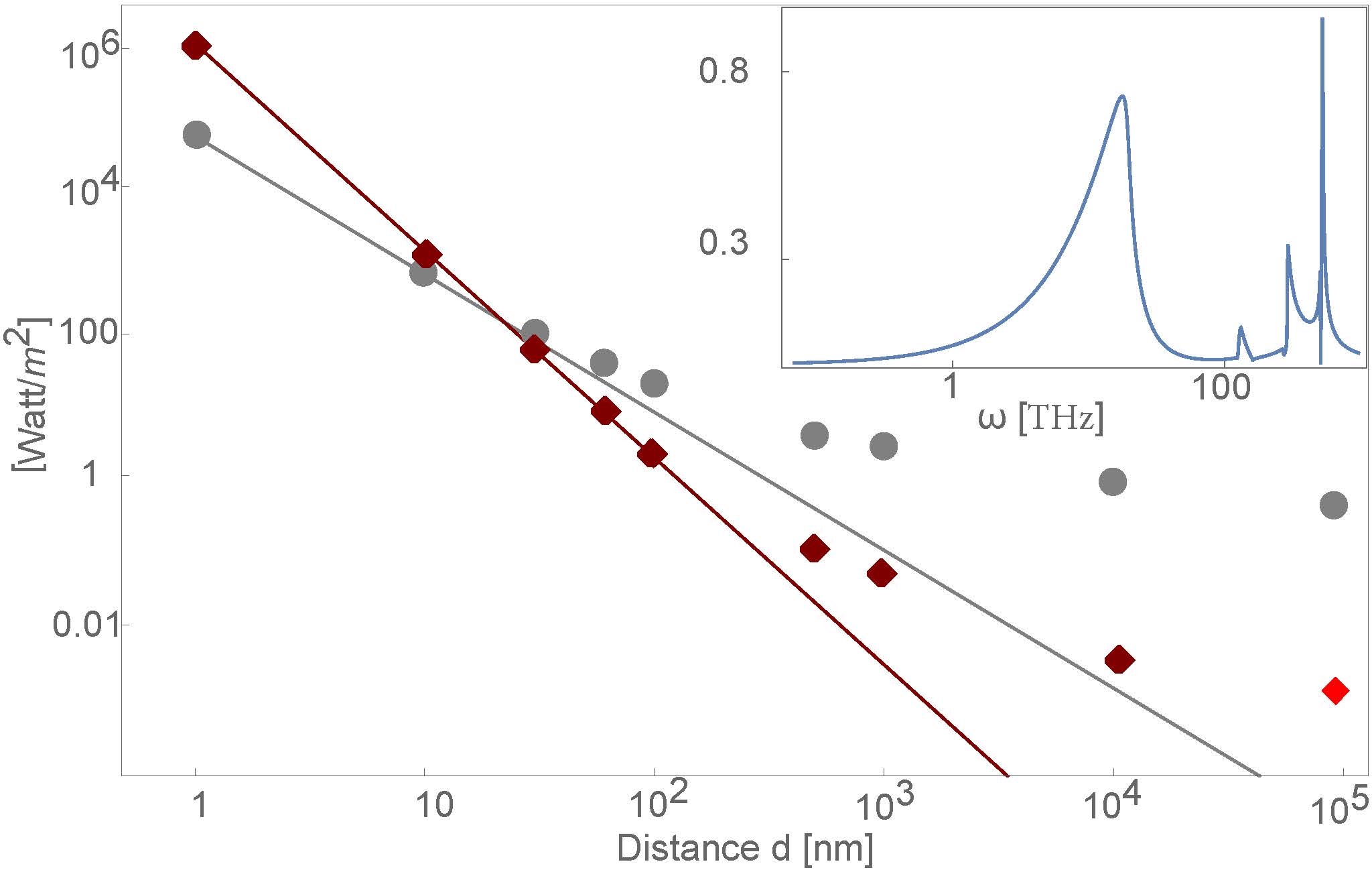"Near-field" & Fluctuational QED
![]() Radiation Pressure is a feature of non-equilibrium steady states with different temperatures
Radiation Pressure is a feature of non-equilibrium steady states with different temperatures
![]()


At short scales "near-field effects" due to evanescent waves modify classical "Stefan-Boltzmann" law:
"Surface Phonon Polaritons Mediated Energy Transfer between Nanoscale Gaps," S.Shen, A. Narayanaswamy, G. Chen
Nano Lett. 9, 2909 (2009) Breaking the law, at the nanoscale (MIT news, July 29, 2009)
![]() A generalized approach for computation of Casimir forces, as well as radiation and heat transfer.
A generalized approach for computation of Casimir forces, as well as radiation and heat transfer.
"Non-equilibrium Fluctuational QED: Heat Radiation, Heat Transfer and Force,"
G. Bimonte, T. Emig, M. Kardar, and M. Krüger, Annual Review of Condensed Matter Physics 8, 119 (2017)
S.M. Rytov (1959):  "Fluctuational QED"
"Fluctuational QED"
Fluctuating currents in each object are related to its temperature by a fluctuation-dissipation condition:

The EM field due to thermal fluctuations of one object is related to overall Green's function by:
_e.jpeg)
The overall fluctuations with many objects at different temperatures is then given by:

From EM correlations follow the stress tensor and the Poynting vector, hence forces and radiation.
![]() Heat transfer at short distances is dominated by evanescent modes at material dependent resonances.
Heat transfer at short distances is dominated by evanescent modes at material dependent resonances.
For a single dominant frequency
, the heat flux diverges at small separations as

![]() Ratchet force due to magnetic field; [far-field (photons) versus near-field (polaritons)]
Ratchet force due to magnetic field; [far-field (photons) versus near-field (polaritons)]
![]()

The propulsive force increases in the near-field regime, even more rapidly than the increase in heat transfer!


Scaled motive force F (red diamonds), and heat transfer H (gray circles) for a SiC plate and one of n-InSb subject to a magnetic field along the x-axis. The dots correspond to numeric calculations and the continuous lines to the small d asymptotes. Note that the force changes sign from +y to -y (dark red to light red diamond) at large separation. Inset: [f(ω)/h(ω)](ωd) for d= 1nm.
(Figure parameters: B= 10T, T1= 300K, T2= 270K.)